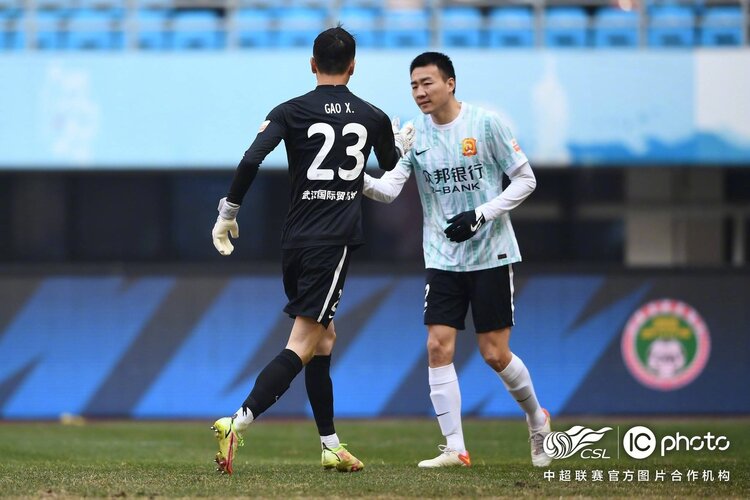Finalising the 2023 Chinese Super League makeup should be a simple formality, but with clubs continuing to struggle with financial difficulties, that is still not the case.
Three clubs were relegated after the 2022 season and three clubs earned promotion from China League One, but that does not necessarily mean those will be the only changes made to the teams that will step onto the pitch in the Chinese top tier next season.
Financial issues have become the norm in Chinese football, especially over the past few seasons, with clubs such as Tianjin Tianhai, Chongqing Liangjiang Athletic and even 2020 Chinese Super League champions Jiangsu FC finding themselves dissolved for various reasons related to finances and funding.
2023 has already claimed its first victim in Wuhan Yangtze River, who suffered relegation from the top tier in 2022, meaning that there is now a deficit of clubs in the second tier that will undoubtedly cause yet another shake-up.
What CSL should look like
From Wuhan Three Towns in 1st down to Guangzhou City in 15th, the league should be unchanged in teams that staved off relegation. Wuhan Yangtze River, Guangzhou FC and Hebei all suffered that disappointing fate, and with Wuhan’s dissolution last week, only two of them are expected to drop down a level.
Replacing them is Kunshan FC, the reigning champions of China League One, who will be joined by fellow Jiangsu-based club Nantong Zhiyun as well as Qingdao Hainiu.
That puts the full list of teams for the 2023 Chinese Super League as follows (in descending order of their 2022 standings): Wuhan Three Towns, Shandong Taishan, Zhejiang FC, Shanghai Port, Chengdu Rongcheng, Henan Songshan Longmen, Beijing Guoan, Tianjin Jinmen Tiger, Meizhou Hakka, Shanghai Shenhua, Dalian Professional, Cangzhou Mighty Lions, Changchun Yatai, Shenzhen, Guangzhou City, Kunshan, Qingdao Hainiu, Nantong Zhiyun.
Well, that is if everything were to remain the status quo, which isn’t something Chinese football has. With well-documented issues persisting throughout the Chinese footballing pyramid, there are still some reportedly unresolved problems at the top level that could see another shift.
Club Issues
There is already talk of financial troubles with Guangzhou City and Shenzhen, with the former being given until the end of this month to settle any wage arrears or risk being expelled from the league while Shenzhen have been on shaky ground for some time and could find themselves going the way of Wuhan Yangtze River.
In previous seasons, when a team avoided relegation from the Chinese Super League but subsequently folded, it presented an avenue for the highest-ranked relegated team to remain in the top tier.
With Wuhan holding that place, it naturally progresses to the next highest, which is Guangzhou FC. If only one of the teams mentioned were to dissolve, Guangzhou would have the opportunity to retain their CSL status, hoping that their youthful squad can progress and improve in 2023.
If two teams were to dissolve, however, the opportunity would be given to Hebei to enjoy the same privilege. However, Hebei have looked destined to fold themselves for the entire 2022 season, finishing on -3 points and with players even holding up banners pleading for ownership to pay their wages. It seems unlikely that the club will be around for much longer, and would not stay in the top tier as a result.
This would open up the opportunity for the fourth-placed team from last season’s China League One to be granted promotion. That honour would go to Shijiazhuang Gongfu, who were only founded in 2020 and recently lost the services of veteran midfielder Wang Song to promoted side Nantong.
Another alternative that has floated around on social media suggests that the Chinese Super League could opt to keep the existing promotions and relegations as they stand and simply reduce in size back down to 16 teams.
2022 was the first year the league increased to 18 teams, so it would be a short-lived attempt at expanding the top tier with finances still insecure after the past few years, meaning that Guangzhou and Hebei would have to accept their fate no matter what the future holds.
As things stand, there’s no telling what the 2023 Chinese Super League could look like as teams still look to figure out their own immediate futures. Could the league reduce back to 16? Could Guangzhou be saved from relegation? Will we see a fourth team promoted from last season’s China League One? There are too many questions and, as usual, very few answers.
All will become clearer the longer the off-season progresses, with the transfer window expected to close at the end of February if nothing ultimately changes. However, change is something expected within the Chinese Super League.
